-
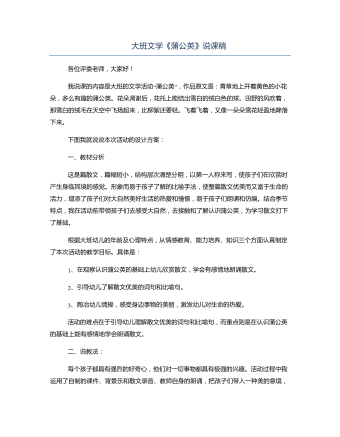
大班文学《蒲公英》说课稿
一、教材分析这是篇散文,篇幅短小,结构层次清楚分明,以第一人称来写,使孩子们在欣赏时产生身临其境的感觉。形象而易于孩子了解的比喻手法,使整篇散文优美而又富于生命的活力,增添了孩子们对大自然美好生活的热爱和憧憬,易于孩子们朗诵和仿编。结合季节特点,我在活动前带领孩子们去感受大自然,去接触和了解认识蒲公英,为学习散文打下了基础。根据大班幼儿的年龄及心理特点,从情感教育、能力培养、知识三个方面认真制定了本次活动的教学目标。具体是:1、在观察认识蒲公英的基础上幼儿欣赏散文,学会有感情地朗诵散文。2、引导幼儿了解散文优美的词句和比喻句。3、陶冶幼儿情操,感受身边事物的美丽,激发幼儿对生命的热爱。活动的难点在于引导幼儿理解散文优美的词句和比喻句,而重点则是在认识蒲公英的基础上能有感情地学会朗诵散文。二、说教法:每个孩子都具有强烈的好奇心,他们对一切事物都具有极强的兴趣。活动过程中我运用了自制的课件、背景乐和散文录音、教师自身的朗诵,把孩子们带入一种美的意境,使孩子们在优美的意境中感受了散文的语言美,体验学习散文的快乐。活动的开展由易到难,层层深入,使孩子们能主动积极、自愿地参与和学习,获得经验,体验了孩子的主体地位,也正好契合了《纲要》中关于“教师应成为幼儿学习活动的支持者、合作者、引导者”的理念。此外我还采用了欣赏倾听法、谈话交流法、游戏表演法引导孩子在活动中敢说、想说、愿意说,树立了孩子的自信心,从而使本次活动达到美的享受,快乐学习的和谐统一。
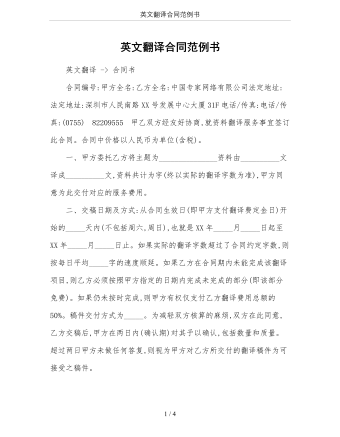
英文翻译合同范例书
合同编号:甲方全名:乙方全名:中国专家网络有限公司法定地址:法定地址:深圳市人民南路XX号发展中心大厦31F电话/传真:电话/传真:(0755) 82209555 甲乙双方经友好协商,就资料翻译服务事宜签订此合同。合同中价格以人民币为单位(含税)。一、甲方委托乙方将主题为_______________资料由__________文译成__________文,资料共计为字(终以实际的翻译字数为准),甲方同意为此交付对应的服务费用。二、交稿日期及方式:从合同生效日(即甲方支付翻译费定金日)开始的_____天内(不包括周六,周日),也就是XX年_____月_____日起至XX年_____月_____日止。如果实际的翻译字数超过了合同约定字数,则按每日平均_____字的速度顺延。如果乙方在合同期内未能完成该翻译项目,则乙方必须按照甲方指定的日期内完成未完成的部分(即该部分免费)。如果仍未按时完成,则甲方有权仅支付乙方翻译费用总额的50%。稿件交付方式为_____。为减轻双方核算的麻烦,双方在此同意,乙方交稿后,甲方在两日内(确认期)对其予以确认,包括数量和质量。超过两日甲方未做任何答复,则视为甲方对乙方所交付的翻译稿件为可接受之稿件。
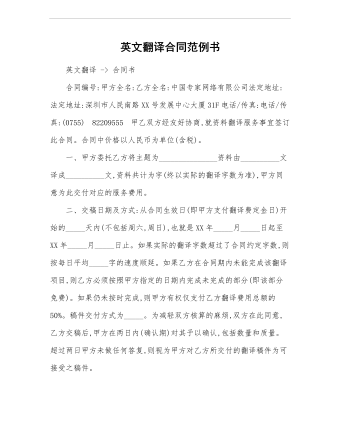
英文翻译合同范例书
英文翻译 -> 合同书合同编号:甲方全名:乙方全名:中国专家网络有限公司法定地址:法定地址:深圳市人民南路XX号发展中心大厦31F电话/传真:电话/传真:(0755) 82209555 甲乙双方经友好协商,就资料翻译服务事宜签订此合同。合同中价格以人民币为单位(含税)。一、甲方委托乙方将主题为_______________资料由__________文译成__________文,资料共计为字(终以实际的翻译字数为准),甲方同意为此交付对应的服务费用。二、交稿日期及方式:从合同生效日(即甲方支付翻译费定金日)开始的_____天内(不包括周六,周日),也就是XX年_____月_____日起至XX年_____月_____日止。如果实际的翻译字数超过了合同约定字数,则按每日平均_____字的速度顺延。如果乙方在合同期内未能完成该翻译项目,则乙方必须按照甲方指定的日期内完成未完成的部分(即该部分免费)。如果仍未按时完成,则甲方有权仅支付乙方翻译费用总额的50%。稿件交付方式为_____。为减轻双方核算的麻烦,双方在此同意,乙方交稿后,甲方在两日内(确认期)对其予以确认,包括数量和质量。超过两日甲方未做任何答复,则视为甲方对乙方所交付的翻译稿件为可接受之稿件。
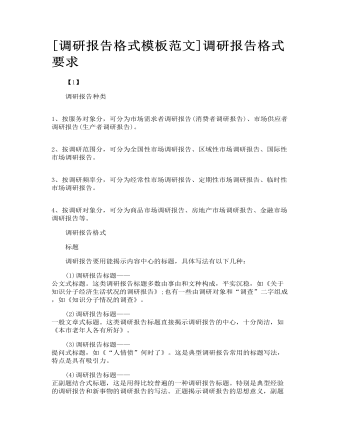
调研报告格式模板范文
(1)调研报告标题——公文式标题。这类调研报告标题多数由事由和文种构成,平实沉稳,如《关于知识分子经济生活状况的调研报告》;也有一些由调研对象和“调查”二字组成,如《知识分子情况的调查》。 (2)调研报告标题——一般文章式标题。这类调研报告标题直接揭示调研报告的中心,十分简洁,如《本市老年人各有所好》。 (3)调研报告标题——提问式标题,如《“人情债”何时了》。这是典型调研报告常用的标题写法,特点是具有吸引力。
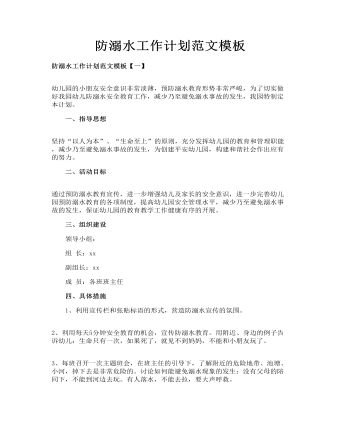
防溺水工作计划范文模板
一、指导思想 坚持“以人为本”、“生命至上”的原则,充分发挥幼儿园的教育和管理职能,减少乃至避免溺水事故的发生,为创建平安幼儿园,构建和谐社会作出应有的努力。 二、活动目标 通过预防溺水教育宣传,进一步增强幼儿及家长的安全意识,进一步完善幼儿园预防溺水教育的各项制度,提高幼儿园安全管理水平,减少乃至避免溺水事故的发生,保证幼儿园的教育教学工作健康有序的开展。
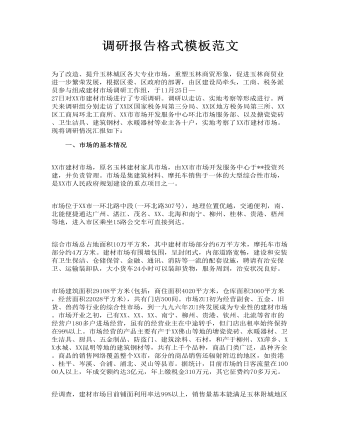
调研报告格式模板范文
(一)市场发展定位不够高,不适应当前社会经济发展的需要。作为中南地区的商贸集散地,玉林有着悠久的商贸历史和较好的商业发展前景。而建材市场的建立和发展,由于认识上的局限性,其发展战略定位不是很高。表现在二个方面:一是市场建设档次不高,大部分建材经销商虽能够归行入市,但是经营方式仍停留在摊位式经营,商品以低、劣居多;二是市场销售覆盖面不广,目前市场上的商品多销在本地,及周边一些县城,知名度低,辐射范围不广,销售量有限,影响力低下。
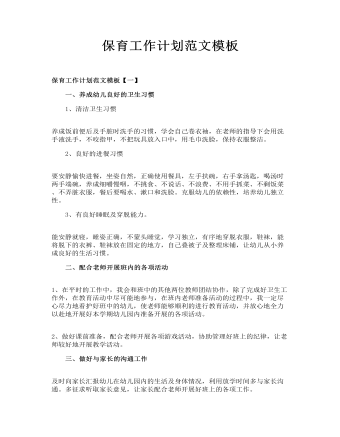
保育工作计划范文模板
1、清洁卫生习惯 养成饭前便后及手脏时洗手的习惯,学会自己卷衣袖,在老师的指导下会用洗手液洗手,不咬指甲,不把玩具放入口中,用毛巾洗脸,保持衣服整洁。 2、良好的进餐习惯 要安静愉快进餐,坐姿自然,正确使用餐具,左手扶碗,右手拿汤匙,喝汤时两手端碗,养成细嚼慢咽,不挑食、不说话、不浪费、不用手抓菜、不剩饭菜、不弄脏衣服,餐后要喝水、漱口和洗脸。克服幼儿的依赖性,培养幼儿独立性。
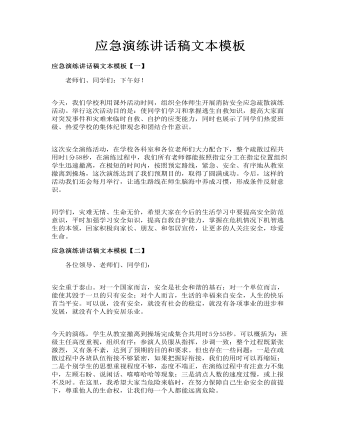
应急演练讲话稿文本模板
一、高度重视,充分认识应急演练工作的重要性和必要性 由于自然灾害或人为原因,当事故或灾害不可避免的时候,有效的应急救援行动是唯一可以抵御事故或灾害蔓延并减缓危害后果的有力措施。应急救援工作是一项涉及面广、专业性很强的工作,是一项社会性系统工程,靠某一个部门是很难完成的,必须依靠部门密切配合,协同作战,迅速、有效的组织和实施应急救援,才能避免和减少损失。各单位必须充分认识到此次演练的重要性和必要性,切实加强组织领导,以此为契机,进一步完善本单位的事故应急管理体系,锻炼应急队伍,真正做到事故发生时应急救援工作能够有序、高效开展。

人教版高中英语必修3Astronomy the science of the stars说课稿3篇
Step 2 Pre-listeningAfter students finish their discussion, I will show a picture of Newton and ask them: Who is him? What is he famous for? Could you find out some words to describe him? Maybe students will answer that he is genius for his finding of theGravitation, making a great contribution to the progress of human being. At that time I will show another two pictures of Einstein and Hawking, letting students guess who they are and write down their idea about the Gravitation. For I have arranged them to search more information about the gravity before this class, Students have beenfamiliar with the topic and will not be afraid about this abstract conception, which is helpful for their listening.Step 3 While-listeningIn this step, students will be required to listen the material for three times. The first and listening is extensive listening and the second and third listening is intensive listening. In the first time, They are required to listen a material including Part 1 and Part 2 and choose the best summary of the listening text. After they choose the right answer, They also need work in group to explain what is wrong with the others. Then I will make a conclusion that we should pay attention to the first paragraph and last paragraph and some keys to get the main idea. By doing this, their capacity of generalization will have a great improvement.Before the second listening, I will ask students to scan the blank on the power point quickly and ask them to note down some key words .Then ask them to listen to the Part 1again and fill the first column of the chart. Maybe some students just show the ideas of these three scientists an still can’t catch their development of gravity. Therefore, I will ask them to listen to Part 2 again and fill in the rest. After finish the listening, I will give them ten minutes to discuss with their partner. I will also guidethem to improve their answers when they discuss with others.

人教版高中英语必修3Festivals around the World说课稿3篇
Teaching plan for Unit 1 book3Good morning, teachers. It’s my great pleasure to be here because I can share my lesson with you and I can learn a lot from it. I’ll begin my lesson from the following four parts, the teaching material, the teaching methods, the studying methods and the teaching procedure.Firstly, let me talk about the teaching material. The content of my lesson is the reading passage festivals and celebrations of Unit 1 Festivals around the world. This passage is about festivals and celebrations. By studying this passage, we’ll enable the students to know that festivals exit everywhere, and many of festivals in different countries celebrate similar ideas. As we all know, the reading passage is the center of each unit. If the Ss can learn it well, it will be helpful to make the Ss learn the rest of this unit.After studying the teaching material, I think the teaching aims are as the followings:1. Knowledge aims:(1) The Ss can master the usage of the important words andexpressions.(2)The Ss can use the __________________ (grammar) in the proper situation.Make students know about the festivals all over the world and the detail of the festivals, such as origin, content, and the date of the holiday festivals.2. Ability aims:(1) Students can talk about festivals and celebrations in English(2) To improve the student’s reading ability, especially their skimming and scanning ability.3. Emotion aims:Make the Ss know about the foreign festivals, and respect other countries’ custom.Next, let’s come to the important points and the difficult points.The important point is how to make the Ss understand the text better and the difficult point is how can they talk about it. secondly, Teaching Methods:1. task-based Language Teaching2. Computer assisted language teaching.3. question-and–answer methodThirdly, Studying Methods:

人教版高中英语必修3The million pound bank note说课稿3篇
在接下来的细读环节,我套用了高考对阅读理解的考查方式设置了5个问题,分别为三个推理判断题,一个细节题和一个主旨大意题。学生需要对文章的内容进行分析、归纳、推理、猜测等高级思维活动才能做出正确的回答。【设计意图】这一过程是对学生进行细读的训练,培养学生获取特定信息和挖掘文章深层次信息的能力。第三环节:Intensive-reading (精读) 15′第三个环节精读,既是最重要的环节,也是突破本课重难点的关键。首先,让学生思考剧本中人物看到百万英镑前后的态度发生了怎样的变化。其次,让学生仔细阅读文章,找出可以表现人物态度变化的具体的语言和动作。最后,让学生总结人物的态度发生变化的根本原因是什么,从而引出Money Talks, 供学生思考。【设计意图】通过一系列的活动培养学生学习从人物的语言和动作探究人物的心理,使学生进一步体会戏剧语言的魅力,从而对文章背后所反映的社会问题进行思考,也为下一步的讨论环节做好铺垫。

新人教版高中英语必修3Unit 3 Diverse Cultures教学设计三
The price is the same as(the price was)before the war.价格与战前相同。(4)定语从句中的“关系代词+助动词be”可以省略。The ticket(that/which was)booked by his sister has been sent to him.他妹妹订的那张票已送到了他那里。Step 5 PracticeActivity 3(1) Guide students to complete the four activities in the Using Structures part of exercise book, in which activities 1 and 2 focus on ellipsis in dialogue answers, activity 3 focus on signs and headlines, two typical situations where ellipsis is used, and activity 4 focus on ellipsis in diary, an informal style.(2) Combine the examples in the above activities, ask students to summarize the omitted situations in groups, and make their own summary into a poster, and post it on the class wall after class to share with the class.(This step should give full play to the subjectivity of students, and teachers should encourage students to conclude different ellipsis phenomena according to their own understanding, they can conclude according to the different parts omitted in the sentence.)Step 6 Homework1. Understand and master the usages of ellipsis;2. Finish the other exercises in Using structures of Workbook.1、通过本节内容学习,学生是否理解和掌握省略的用法;2、通过本节内容学习,学生能否根据上下文语境或情景恢复句子中省略的成分,体会使用省略的效果;3、通过本节内容学习,学生能否独立完成练习册和导学案中的相关练习。

新人教版高中英语必修3Unit 3 Diverse Cultures教学设计二
(2)Consolidate key vocabulary.Ask the students to complete the exercises of activity 6 by themselves. Then ask them to check the answers with their partners.(The first language:Damage of the 1906 San Francisco earthquake and fire.A second language: Yunnan - one of the most diverse provinces in China).Step 5 Language points1. The teacher asks the students to read the text carefully, find out the more words and long and difficult sentences in the text and draw lines, understand the use of vocabulary, and analyze the structure of long and difficult sentences.2. The teacher explains and summarizes the usage of core vocabulary and asks the students to take notes.3. The teacher analyzes and explains the long and difficult sentences that the students don't understand, so that the students can understand them better.Step 6 Homework1. Read the text again, in-depth understanding of the text;2. Master the use of core vocabulary and understand the long and difficult sentences.3. Complete relevant exercises in the guide plan.1、通过本节内容学习,学生是否理解和掌握阅读文本中的新词汇的意义与用法;2、通过本节内容学习,学生能否结合文本特点了解文章的结构和作者的写作逻辑;3、通过本节内容学习,学生能否了解旧金山的城市风貌、文化特色,以及加利福尼亚州的历史,体会多元文化对美国的影响。

新人教版高中英语必修3Unit 3 Diverse Cultures教学设计四
该板块的活动主题是“介绍一个有显著文化特征的地方”( Describe a place with distinctive cultural identity)。该板块通过介绍中国城继续聚焦中国文化。本单元主题图呈现的是旧金山中国城的典型景象, Reading and Thinking部分也提到中国城,为该板块作铺垫。介绍中国城的目的主要是体现中国文化与美国多元文化的关系,它是美国多元文化的重要组成部分。中国城也是海外华人的精神家园和传播中国文化的重要窗口,外国人在中国城能近距离体验中国文化。1. Read the text to understand the cultural characteristics of Chinatown in San Francisco and the relationship between Chinese culture and American multiculturalism;2. Through reading, learn to comb the main information of the article, understand the author's writing purpose and writing characteristics;3. Learn to give a comprehensive, accurate, and organized description of the city or town you live in;Learn to revise and evaluate your writing.Importance:1. Guide the students to read the introduction of Chinatown in San Francisco and grasp its writing characteristics;2. Guide students to introduce their city or town in a comprehensive, accurate and organized way;3. Learn to comb the main information of the article, understand the author's writing purpose, and master the core vocabulary.

新人教版高中英语必修3Unit 3 Diverse Cultures教学设计一
Activity 81.Grasp the main idea of the listening.Listen to the tape and answer the following questions:Who are the two speakers in the listening? What is their relationship?What is the main idea of the first part of the listening? How about the second part?2.Complete the passage.Ask the students to quickly review the summaries of the two listening materials in activity 2. Then play the recording for the second time.Ask them to complete the passage and fill in the blanks.3.Play the recording again and ask the students to use the structure diagram to comb the information structure in the listening.(While listening, take notes. Capture key information quickly and accurately.)Step 8 Talking Activity 91.Focus on the listening text.Listen to the students and listen to the tape. Let them understand the attitudes of Wu Yue and Justin in the conversation.How does Wu Yue feel about Chinese minority cultures?What does Justin think of the Miao and Dong cultures?How do you know that?2.learn functional items that express concerns.Ask students to focus on the expressions listed in activity. 3.And try to analyze the meaning they convey, including praise (Super!).Agree (Exactly!)"(You're kidding.!)Tell me more about it. Tell me more about it.For example, "Yeah Sure." "Definitely!" "Certainly!" "No kidding!" "No wonder!" and so on.4.Ask the students to have conversations in small groups, acting as Jsim and his friends.Justin shares his travels in Guizhou with friends and his thoughts;Justin's friends should give appropriate feedback, express their interest in relevant information, and ask for information when necessary.In order to enrich the dialogue, teachers can expand and supplement the introduction of Miao, dong, Lusheng and Dong Dage.After the group practice, the teacher can choose several groups of students to show, and let the rest of the students listen carefully, after listening to the best performance of the group, and give at least two reasons.
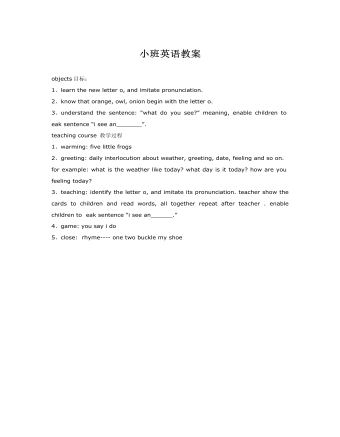
小班英语教案
objects目标: 1、learn the newletter o, and imitate pronunciation. 2、know that orange,owl, onion begin with the letter o. 3、understand thesentence: “what do you see?” meaning, enable children to eak sentence “isee an_______”. teaching course 教学过程 1、warming: fivelittle frogs
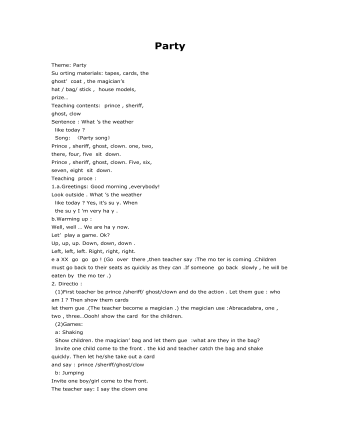
大班英语教案:Party
prize… Teaching contents: prince , sheriff, ghost, clow Sentence : What ’s the weather like today ? Song: 《Party song》 Prince , sheriff, ghost, clown. one, two, there, four, five sit down. Prince , sheriff, ghost, clown. Five, six, seven, eight sit down. Teaching proce : 1.a.Greetings: Good morning ,everybody!
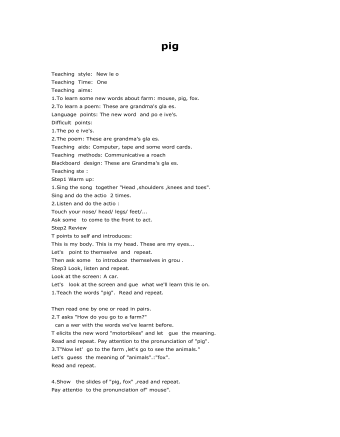
大班英语教案:pig
1.To learn some new words about farm: mouse, pig, fox. 2.To learn a poem: These are grandma's glaes. Language points: The new word and po eive's. Difficult points: 1.The po e ive's. 2.The poem: These are grandma's gla es. Teaching aids: Computer, tape and some wordcards. Teaching methods: Communicative aroach Blackboard design: These are Grandma's glaes. Teaching ste : Step1 Warm up: 1.Sing the song together "Head,shoulders ,knees and toes". Sing and do the actio 2 times.
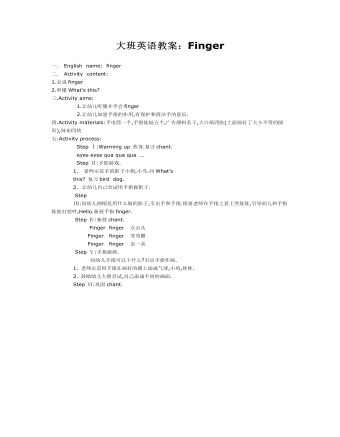
大班英语教案:Finger
二. Activity content:1.会说finger2.听懂What’s this?三.Activity aims: 1.让幼儿听懂并学会finger 2.让幼儿知道手指的作用,有保护和清洁手的意识.四.Activity materials:手电筒一个,手指娃娃五个,广告颜料若干,大白纸四张(上面画好了大小不等的圆形),抹布四块
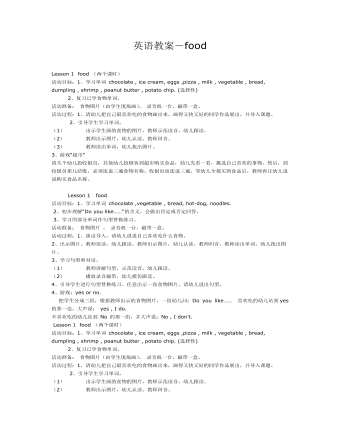
英语教案-food
2、复习已学食物单词。活动准备: 食物图片(由学生现场画)。 录音机一台,磁带一盒。活动过程:1、请幼儿把自己最喜欢吃的食物画出来,画得又快又好的同学作品展出,并导入课题。 2、引导学生学习单词。(1) 出示学生画的食物的图片,教师示范读音,幼儿跟读。(2) 教师出示图片,幼儿认读。教师纠音。(3) 教师读出单词,幼儿找出图片。3、游戏“超市”请几个幼儿扮收银员,其他幼儿扮顾客到超市购买食品,幼儿先看一看,挑选自己喜欢的事物,然后,到收银员那儿结账,必须连说三遍食物名称,收银员也连说三遍。等幼儿全都买到食品后,教师再让幼儿说说购买食品名称。 Lesson 1 food活动目标:1、学习单词 chocolate ,vegetable , bread, hot-dog, noodles. 2、初步理解“Doyou like……”的含义,会做出肯定或否定回答。 3、学习用部分单词作句型替换练习。活动准备: 食物图片 。 录音机一台,磁带一盒。活动过程:1、谈话导入。请幼儿说说自己喜欢吃什么食物。2、出示图片。教师范读,幼儿跟读。教师出示图片,幼儿认读。教师纠音。教师读出单词,幼儿找出图片。3、学习句型和对话。 (1) 教师讲解句型,示范读音,幼儿跟读。(2) 播放录音磁带,幼儿模仿跟读。4、引导学生进行句型替换练习。任意出示一张食物图片,请幼儿说出句型。